Loofah (Luffa sponge) Profile
Written by Iris
Oct 22 2021
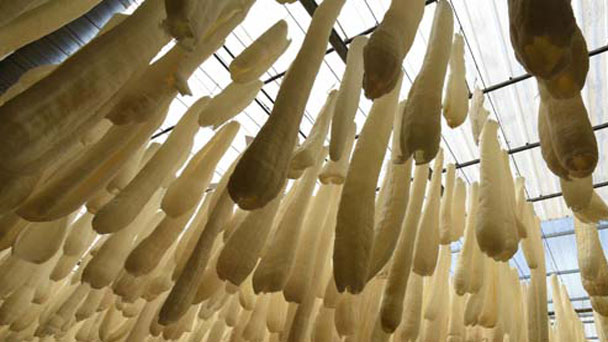
Loofahs (Luffa sponge) are best known as bath brushes, but they actually started out as gourds like cucumbers. Two types of Loofah are commonly grown in Florida: angled luffa and smooth-fruited luffa. Both types of Loofah (Luffa sponge) can be eaten when young, but most gardeners grow them for their fibrous insides, which are great for cleaning houses and bodies.
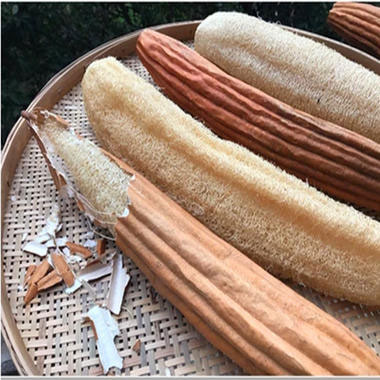
The seeds were offered for sale in drug stores so that people could buy them and grow their own novelty plants. They were used not only for bathing but also for scrubbing in the kitchen.
Before other synthetic materials were created, loofah fibers were sometimes used as insulation, packing material, and mattress stuffing.
Loofah gourds were also grown as an edible plant, especially by Chinese immigrants. The fruits were harvested when they were small and cooked on their own or in vegetable dishes. Their flavor is a combination of cucumber and zucchini.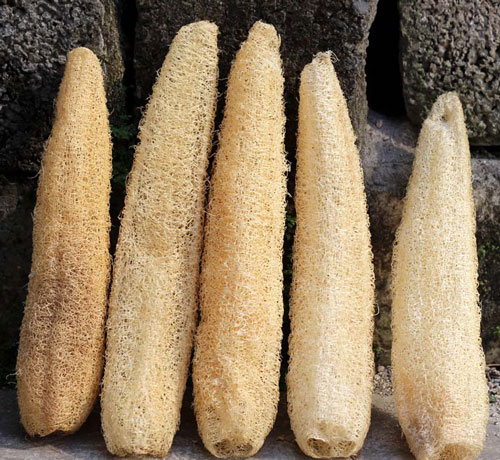
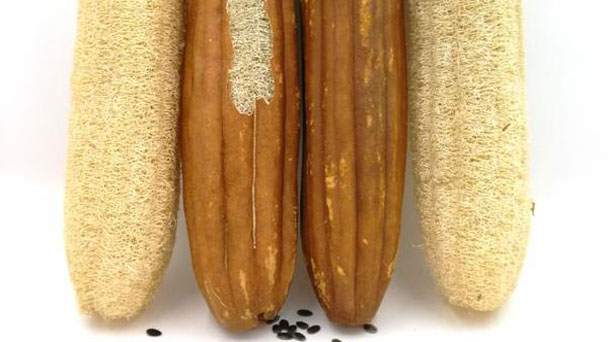
Soaking the seed for a few hours in lukewarm water ahead of sowing can help to encourage better germination. Fill your pots up loosely with compost and tap down lightly once or twice.
Hold the loofah seed, sides on, between finger and thumb and push it sideways down into the loose compost, about 1.5cm deep.
Tap the pot again to settle the soil over the hole. Make sure you pop a label in to avoid mix-ups later.
Then the pots need heat, lots of lovely heat! 25 degrees Celsius of heat. So, putting your pots into a heated propagator box is best for success.
Once you've sown your seeds and placed them into the propagator be sure to water them water them. Avoid overwatering though, as this can cause the seeds to rot.
Try to resist the temptation to keep taking the lid off for a peep, as this will let the built-up moisture out of the propagator.
Germination won't take long at 25 degrees, so check in a week but they may take 2 or even 3 weeks at cooler temperature. Too cool a temperature and the seed may rot rather than germinate, so the warmth is very important.
Once the roots are starting to show through the holes at the base of the pot it's time to pot them up. We pot ours into bucket-size pots but if your indoor space is limited you could use smaller ones and increase the size as the plant grows.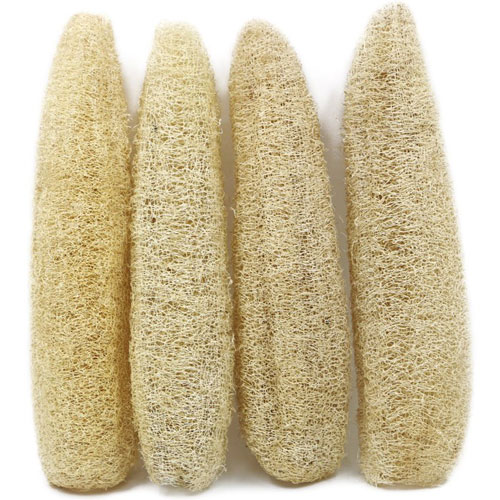
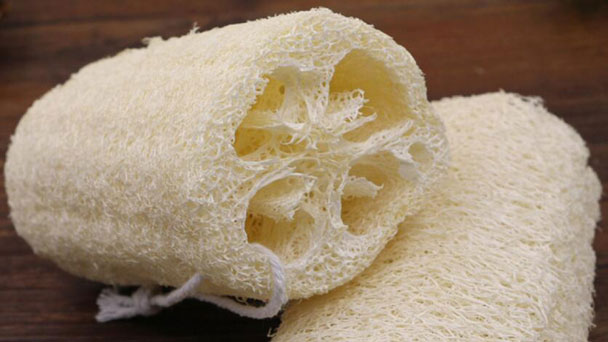
Thanks to its rounded fibers, luffa will deeply exfoliate your skin and make it fresh and smooth without damaging it.
Regular usage will clean oils and dirt particles from your pores
By removing dead skin cells, luffa will make your skin look tender
Since luffa will open your skin up, it will absorb other skin care products much easier
It may help you reduce problems with acne
You can use this plant as a practical material for wound care
It is a plant, and you can add used luffa into your compost pile after using it
You can use this sponge instead of commercial cleaners full of plastic microbeads
In general, if you keep your luffa clean and dry it properly, you can use the same sponge for three to four weeks without any possible issues. The best thing you can do is to wash it adequately and hang it outside. Ultraviolet light will disinfect the sponge, and you will be able to use it for a long time.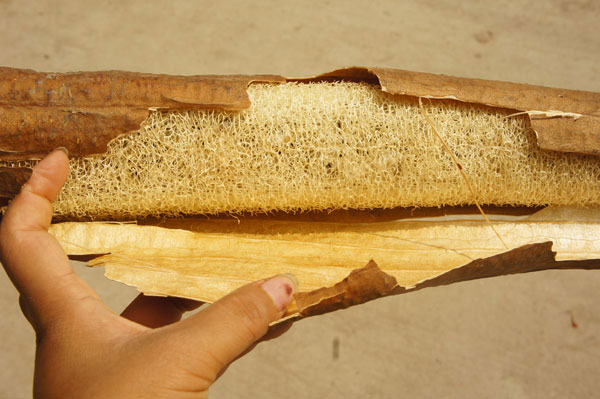
Cucumber beetles, squash vine borers, and squash bugs are the main insect pests. Regularly check your plants for signs of an invasion. You can also check the underside of leaves and remove eggs before they hatch.
Squash vine borers can be especially detrimental to your plants because they bore inside the vines and will eventually kill them. You can prevent this in young plants by wrapping strips of row cover around the base and up the vines as they grow.
If you notice little piles of shavings at the base of your plants or along the vines, you probably have a borer already inside. You can cut it out with a sharp knife by slicing open one side of the vine. After you remove the culprit, bury the sliced section under soil if possible.
The most common disease problems are fungal pathogens like powdery mildew. These usually aren’t bad enough to kill your plants, but the best prevention is to space plants properly and avoid getting the leaves wet as much as possible.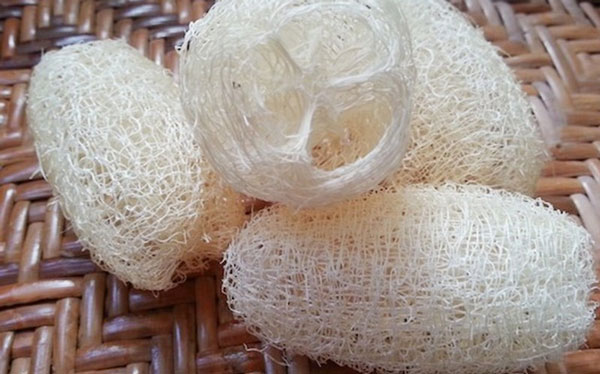
Loofah PictureLoofah InfoLoofah HistoryLoofah Native HabitsLoofah DistributionHow to Grow & Care for Loofah (Luffa sponge)How to Grow LoofahHow to Care for LoofahLoofah UsesLoofah VarietiesLoofah Common Pests/DiseasesLoofah Design TipsLoofah Harvesting
Loofah Picture

Loofah Info
| Botanical Name | Luffa aegyptiaca, Luffa cylindrica |
| Common Name | Luffa, Loofah, Loofa, Dishrag gourd, Egyptian luffa, Gourd luffa, Luffa sponge, Smooth luffa, Sponge gourd |
| Plant Type | Annual |
| Mature Size | Two to three feet height, eight to 12 feet spread |
| Sun Exposure | Full sun |
| Soil Type | Any soil type enriched with organic matter |
| Soil pH | Slightly alkaline; 6.0 to 6.5 |
| Bloom Time | Summer |
Loofah History
Loofah gourds are thought to be native to India. The plants and the sponges that come from them were likely introduced to western countries like the U.S. in the 1800s. Loofahs were given names like “vegetable sponge” and “poor man’s dish rag.”The seeds were offered for sale in drug stores so that people could buy them and grow their own novelty plants. They were used not only for bathing but also for scrubbing in the kitchen.
Before other synthetic materials were created, loofah fibers were sometimes used as insulation, packing material, and mattress stuffing.
Loofah gourds were also grown as an edible plant, especially by Chinese immigrants. The fruits were harvested when they were small and cooked on their own or in vegetable dishes. Their flavor is a combination of cucumber and zucchini.

Loofah Native Habits
The Loofah vines must have a strong trellis system to climb. The vines prefer to grow tall and will do well on a 6 to 10 feet (2-3m) high trellis. The vine length can exceed 30 feet (9m). The Loofah sponges can get heavy, so the more places the vine tendrils can hold on to the better, it may need to be supported so that it doesn't pull the whole vine down. Loofah (Luffa sponge) produce large yellow flowers.Loofah Distribution
Luffa sponges don't come from the ocean. And they're not from manmade materials. Rough-textured exfoliators originate from luffa: dried fiber from the vegetable of the same name. Luffa or loofah (botanically Luffa aegyptiaca) is a vine-grown member of the pumpkin, squash and gourd family, Cucurbitaceae. Centuries ago, the luffa plant was brought to this country by European settlers. They planned to domesticate it in the New World. Though a few varieties are edible, most were cultivated for their utilitarian value.
How to Grow & Care for Loofah (Luffa sponge)
How to Grow Loofah
- With Seeds
Soaking the seed for a few hours in lukewarm water ahead of sowing can help to encourage better germination. Fill your pots up loosely with compost and tap down lightly once or twice.
Hold the loofah seed, sides on, between finger and thumb and push it sideways down into the loose compost, about 1.5cm deep.
Tap the pot again to settle the soil over the hole. Make sure you pop a label in to avoid mix-ups later.
Then the pots need heat, lots of lovely heat! 25 degrees Celsius of heat. So, putting your pots into a heated propagator box is best for success.
Once you've sown your seeds and placed them into the propagator be sure to water them water them. Avoid overwatering though, as this can cause the seeds to rot.
Try to resist the temptation to keep taking the lid off for a peep, as this will let the built-up moisture out of the propagator.
Germination won't take long at 25 degrees, so check in a week but they may take 2 or even 3 weeks at cooler temperature. Too cool a temperature and the seed may rot rather than germinate, so the warmth is very important.
Once the roots are starting to show through the holes at the base of the pot it's time to pot them up. We pot ours into bucket-size pots but if your indoor space is limited you could use smaller ones and increase the size as the plant grows.

How to Care for Loofah
- Light
- Soil
- Water
- Temperature and Humidity
- Fertilizer

Loofah Uses
- Health Benefits
Thanks to its rounded fibers, luffa will deeply exfoliate your skin and make it fresh and smooth without damaging it.
Regular usage will clean oils and dirt particles from your pores
By removing dead skin cells, luffa will make your skin look tender
Since luffa will open your skin up, it will absorb other skin care products much easier
It may help you reduce problems with acne
You can use this plant as a practical material for wound care
- Environmental Uses
It is a plant, and you can add used luffa into your compost pile after using it
You can use this sponge instead of commercial cleaners full of plastic microbeads
In general, if you keep your luffa clean and dry it properly, you can use the same sponge for three to four weeks without any possible issues. The best thing you can do is to wash it adequately and hang it outside. Ultraviolet light will disinfect the sponge, and you will be able to use it for a long time.

Loofah Varieties
There are two species of luffa – Luffa acutangula, best for flavour, which looks like a fluted green barrage balloon about 28cm/10in long and L..cylindrica, which looks very similar to a courgette, except that the skin is smooth, shinier and fairly hard rather than slightly bristly. Both have similar leaves, deeply lobed and sprawl rather than climb, using tendrils. Individual plants have flowers of a single sex. Inside both species of luffa is a creamy flesh with many small seeds, similar to a courgette in texture and flavour. The two species will hybridise if grown even at considerable distances apart, so if you want to save seeds it's better to only grow one species at a time. The smooth luffa tends to produce fruits in shortening days (after midsummer in the UK) while angled luffa is unaffected by day-length. At present there are no specific cultivars sold in the UK, but a range of varieties exists elsewhere, including plants with long, short or rounded fruits, and differences in length of time from seed to fruit production. Some cultivars are selected for the quality of their hard internal fibres, used for sponges, while others are grown for medicinal properties, particularly in China. ‘Satiputiya’ is a hermaphrodite variety.Loofah Common Pests/Diseases
Loofah (Luffa sponge) plants can be attacked by the same insects and diseases that other winter squash and gourds are beset by.Cucumber beetles, squash vine borers, and squash bugs are the main insect pests. Regularly check your plants for signs of an invasion. You can also check the underside of leaves and remove eggs before they hatch.
Squash vine borers can be especially detrimental to your plants because they bore inside the vines and will eventually kill them. You can prevent this in young plants by wrapping strips of row cover around the base and up the vines as they grow.
If you notice little piles of shavings at the base of your plants or along the vines, you probably have a borer already inside. You can cut it out with a sharp knife by slicing open one side of the vine. After you remove the culprit, bury the sliced section under soil if possible.
The most common disease problems are fungal pathogens like powdery mildew. These usually aren’t bad enough to kill your plants, but the best prevention is to space plants properly and avoid getting the leaves wet as much as possible.

Loofah Design Tips
The bright flowers are also attractive, opening in the morning, and attracting honey bees, blue-banded bees and carpenter bees into the garden. If you've got an unsightly shed or a bare fence, you might like to grow luffas as a productive screen. They're best grown on a pergola so the fruits hang down. But grow them as an unusual gift because they are always appreciated.Loofah Harvesting
Harvest when the skin feels thin and loose, as if it is going to come of easily. Leaving it to dry in the sun can make it easier to peel. Many people find it easier to cut the bottom off before peeling and shaking/banging/tapping out the seeds into a bucket, there should be a few hundred in a good sized loofah. The banging and tapping will also help to loosen the skin making it easier to peel. Peeling the loofah itself is not that dissimilar to peeling a banana. Once peeled wash thoroughly and then dry out completely before storing to avoid it going mouldy. It can then be cut into different shapes as scrubbing pads for pots and pans or left whole as a back scratcher.Latest Updated
- Benefits of Bugleweed - 7 Science-backed Health Benefits
- Bugleweed Dangers & Side Effects - Is It Poisonous?
- How to Plant Evergreen Trees - What You Should Know
- When to Plant Evergreens - Grow Guide for Evergreen Trees
- 12 Wonderful Evergreen Shrubs for Your Garden
- 12 Popular Evergreen Plants with Pictures for Beginners
- When And How To Prune A Lilac Bush Like a Pro
- How to Grow & Care for Lilac Vine (Hardenbergia Violacea)
- Japanese Lilac Tree (Syringa Reticulata) Care & Propagation Guide
- Shumard Oak Pros and Cons - What to Know
Popular Articles
- Winter maintenance of Antirrhinum Majus
- How to Grow Terminalia Mantaly Tree
- How to Grow and Care for Crossostephium Chinense
- How to grow Antirrhinum Majus in spring
- Peristeria Elata (Dove Orchid) Profile: Info & Care Guide
- Underwatered Snake Plant (Sansevieria Trifasciata) - Signs And How To Fix
- How to Care for Brazilian Jasmine Plant (Mandevilla Sanderi)
- How to Grow & Care for Graptopetalum Purple Delight in Summer
- Rosa Chinensis (China Rose): Plant Growing & Care Tips
- How to Care for Baby Sun Rose (Aptenia Cordifolia)